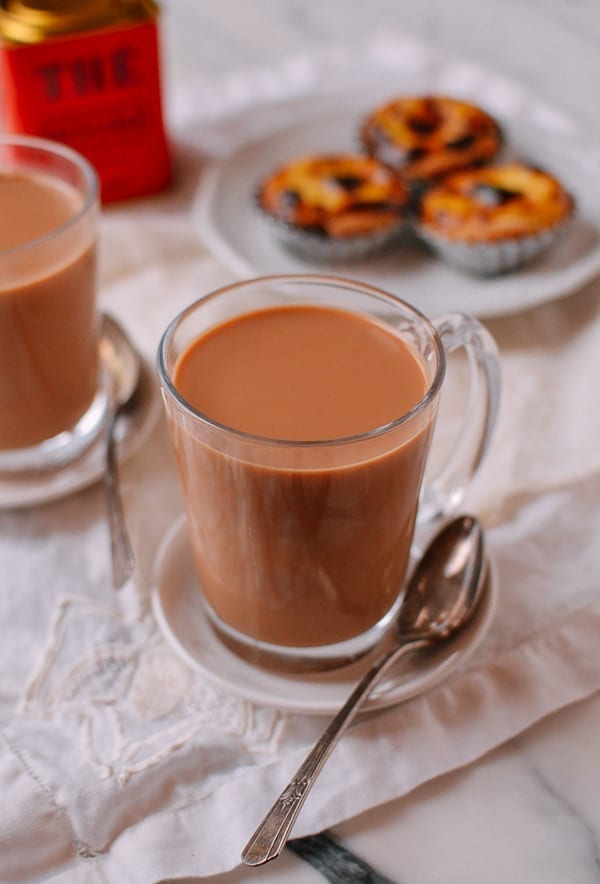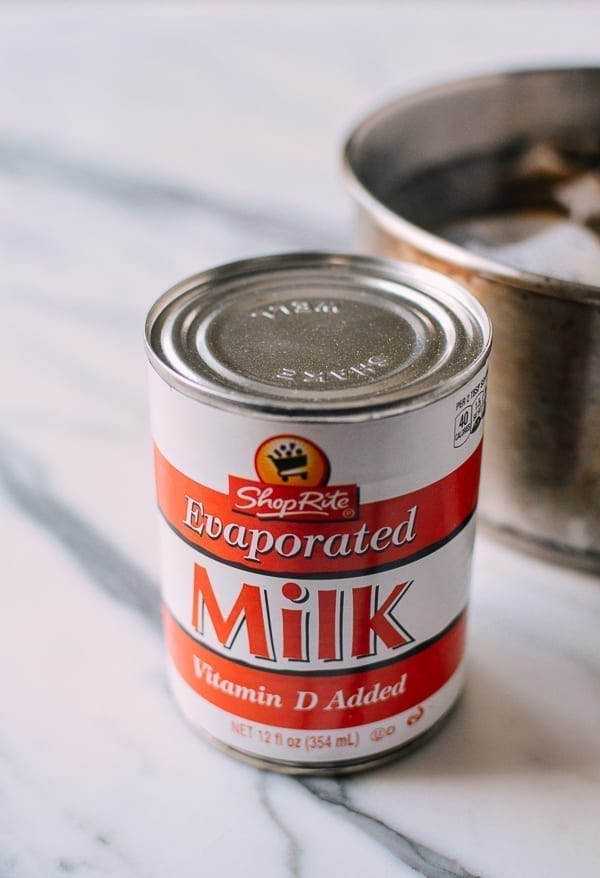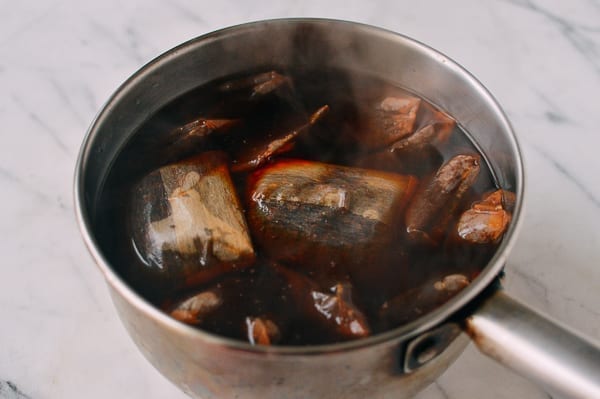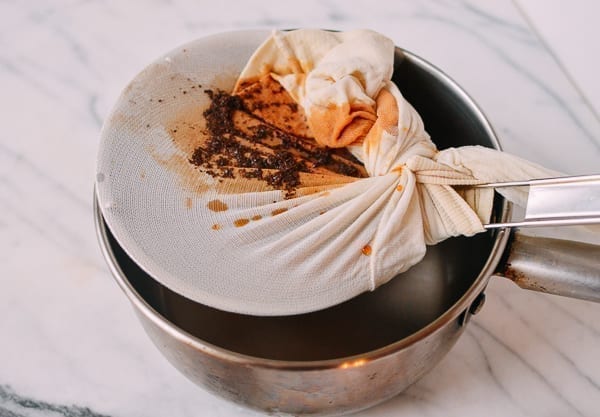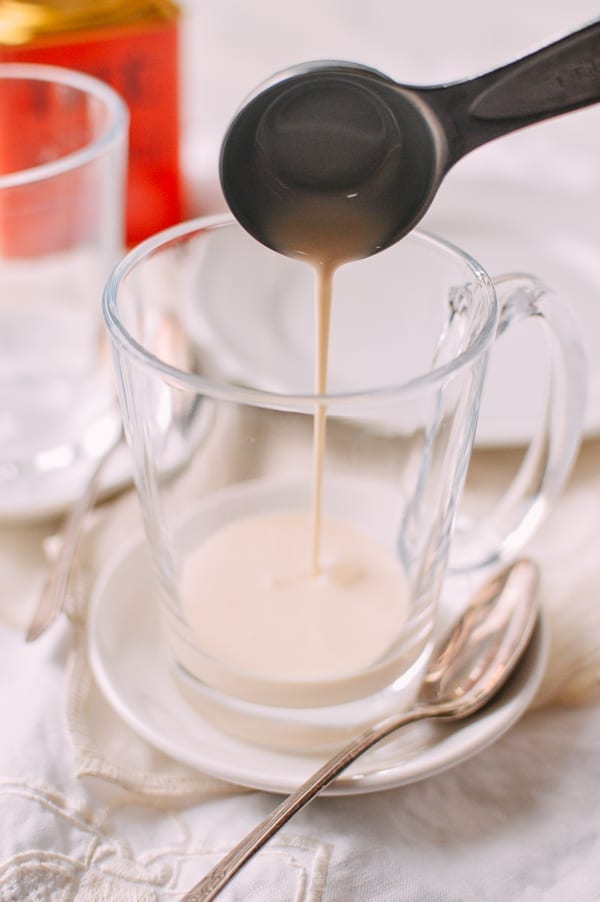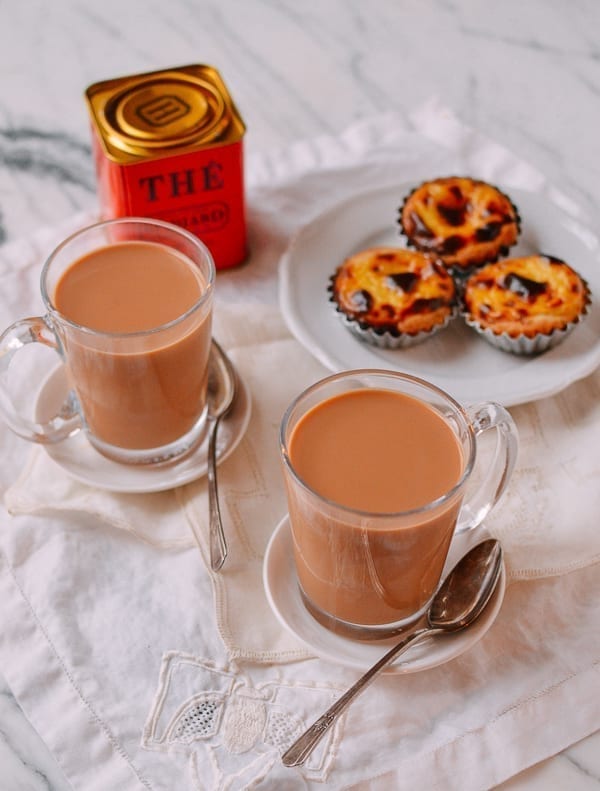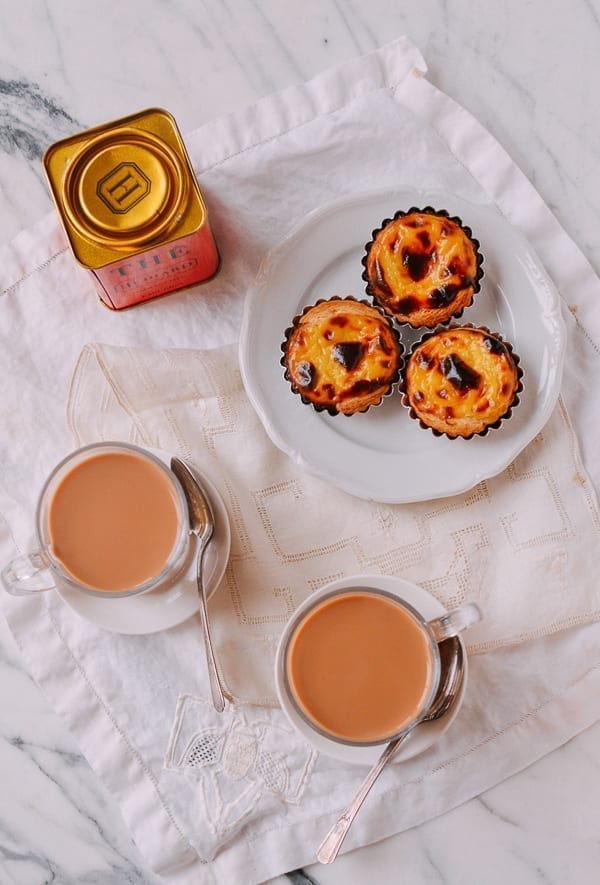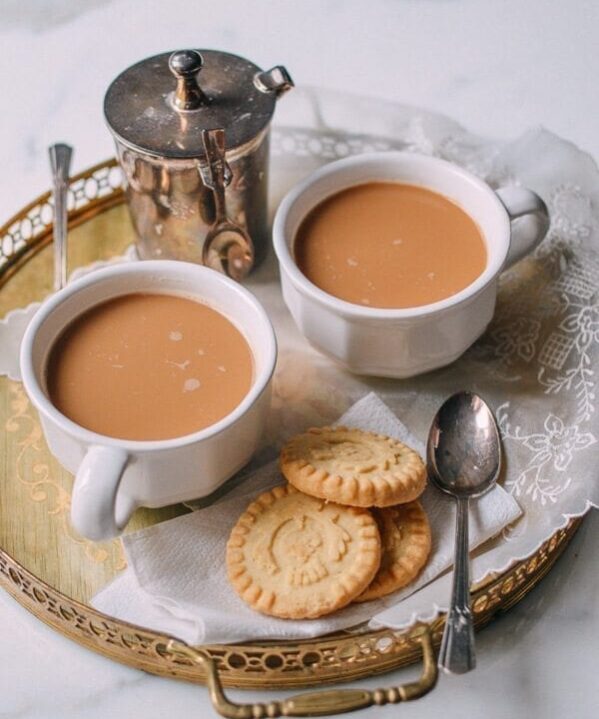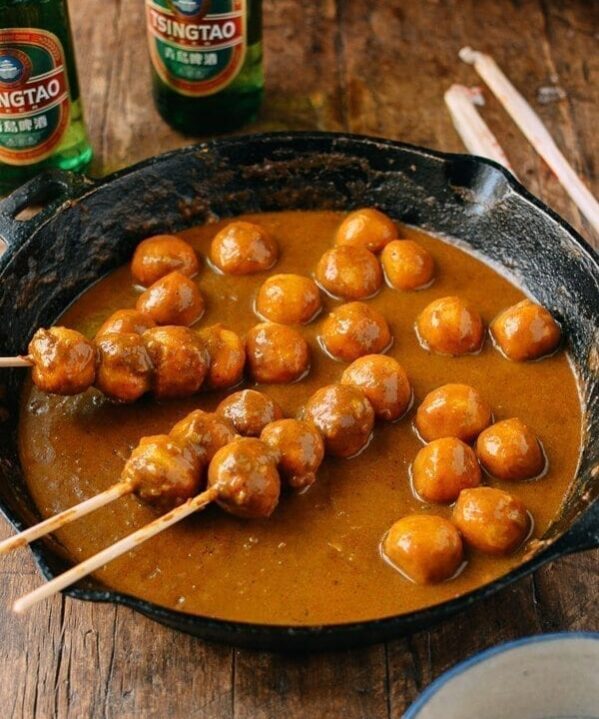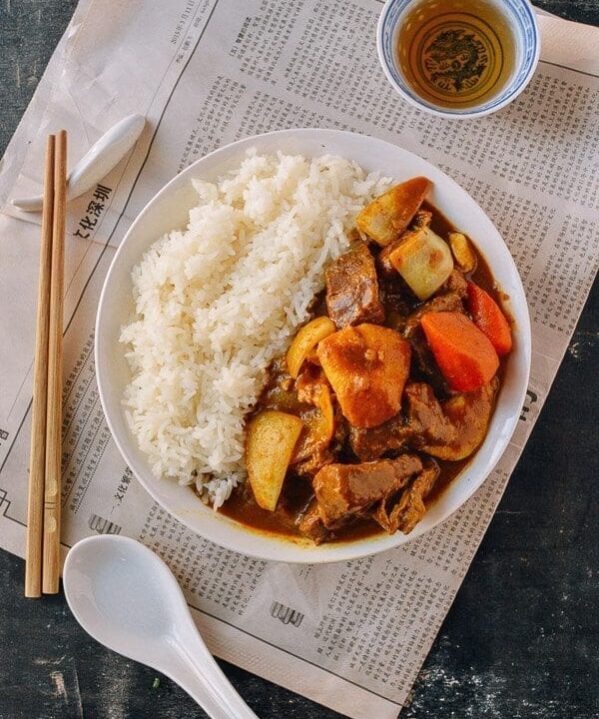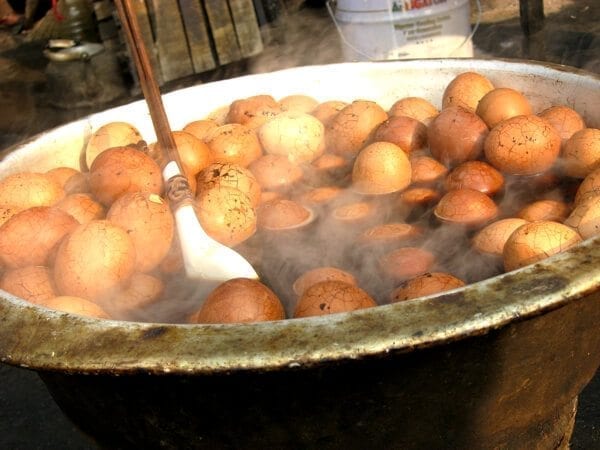Hong Kong Milk Tea is a magical, highly caffeinated, wonderfully smooth morning drink that I had for the first time in its true glory on our trip to Hong Kong.
Always served piping hot and perfectly sweetened, it has just the right amounts of evaporated milk and sweetened condensed milk.
It gives you a jolt without any unpleasant buzz (speaking from my own experience anyway), and a blend of teas makes for a wonderfully strong and fragrant cuppa. It went well with everything from a plate of Hainanese chicken at a hole-in-the-wall lunch joint to a Portuguese custard tart, to a custard bun eaten on the street.
Developing This Hong Kong Milk Tea Recipe
I spent a lot of time on this recipe, watching videos online and thinking back to the many cups of Hong Kong Milk Tea I enjoyed on our short trip there. There are many methods for brewing out there, and notably, there’s a pantyhose-like filter involved.
There’s also tea “pulling” (pouring the tea from one container to another repeatedly), and many thoughts on optimal temperatures and brewing times. I’ve sifted through all the information out there to create what I think is the perfect, no-fuss cup of Hong Kong milk tea.
What Kind of Tea Should You Use?
First there’s the tea blend: many purveyors of great Hong Kong Milk Tea closely guard the blend of teas they use, but it’s always a blend! So when in Rome Hong Kong…
Ceylon is the undisputed common thread across Hong Kong Milk Tea recipes. I used a Ceylon Orange Pekoe that we had in the pantry. From there, I did a little experimenting with my mother’s stash of tea to see what kind of flavors they each yielded, and I was surprised to find that the humble Lipton black tea bag, also made from Orange Pekoe, did a great job at cutting costs AND packing the right flavor.
My parents have actually been to tea farms in China, and apparently, Lipton buys up their “tea dust” or “tea fannings,” i.e. the crushed remnants from the production of the more expensive loose leaf tea. So in a weird way, you might be getting some quality stuff! To round out my tea blend, I threw in some Earl Gray for another citrusy, robust layer of flavor.
From there, there’s the pesky question of tea ratios. I did a lot of tearing open of tea bags, and here are a couple of helpful tips for formulating the right Hong Kong Milk Tea blend:
- 6 cups of water boils down to about 4 1/2 cups of tea, or about 4 servings
- 2 standard tea bags equals about 1 tablespoon.
It’s surprising just how much tea you need to make an authentic cup of Hong Kong Milk tea, as it is traditionally so strong. I watched countless Hong Kong Milk Tea vendors on YouTube scooping huge cups of tea to make just one large pot!
To maximize your tea, you can get another small pot of tea out of the first batch of tea after you’ve boiled it. It will be slightly less flavorful but will be good for drinking black and perhaps not diluted with milk.
By the end of my day of tea brewing, I finally had the perfect cup of Hong Kong Milk Tea with a homemade Portuguese egg tart (another experiment that took some painstaking trial and error from my dad) at around 5pm.
It was delicious, and brought me right back to Hong Kong. Though tread carefully––at 2 AM that night, I was still lying awake, hopped up on 4 cups of tea!
In all seriousness, though, this is my new favorite and go-to. I hope you enjoy it, and if you find optimal tea blends, leave them in the comments!
Hong Kong Milk Tea: The Recipe
First, add 6 cups of very hot water to a pot. Add the tea and bring to a boil. Turn down the heat and simmer for 15 minutes. Your tea should be very dark!
From there, pour the tea through a fine-meshed strainer with cotton cheesecloth wrapped around it. This is optional to make sure you get every last bit of tea fanning out of your drink.
Portion out the tea––one serving is a little over 1 cup. Mix in ⅓ cup evaporated milk and about 1 teaspoon sweetened condensed milk, or to taste. Stir thoroughly, and enjoy immediately!
The shortcut version of this recipe (good for single servings) is to put 1 teabag each of Lipton, your favorite Orange Pekoe, and Earl Gray teas into a mug with boiling water, let steep for 5 minutes, and then add ⅓ cup of evaporated milk and sweetened condensed milk to taste.
Hong Kong Milk Tea
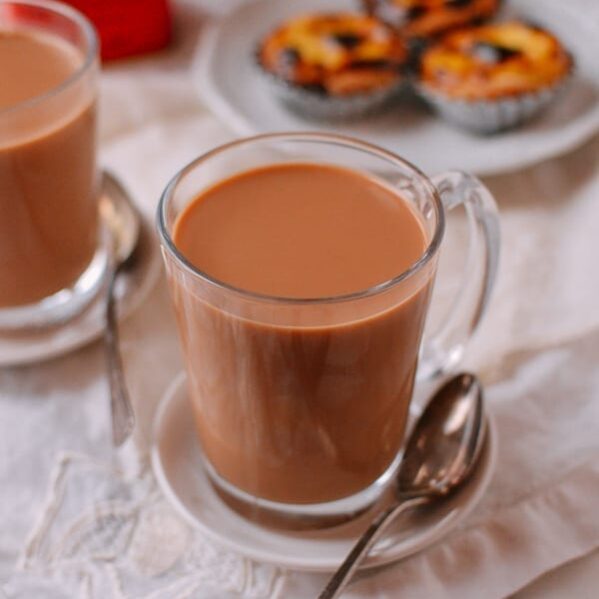
Ingredients
- 6 cups hot water (1.4L, makes about 4 ½ cups of tea after the boiling process)
- 10 tablespoons tea leaves or fannings (in tea bags or tea strainers; any combination of Ceylon Orange Pekoe/Lipton Black Tea, Earl Gray, or your favorite black tea)
- 1⅓ cups evaporated milk (315 ml, ⅓ cup per serving)
- 1 to 2 tablespoons sweetened condensed milk ~1 teaspoon per serving, or to taste
- a fine-meshed strainer lined with a piece of fine cheesecloth cheese cloth is optional, to get a perfectly smooth tea
Instructions
- Add 6 cups of very hot water to a pot. Add the tea and bring to a boil. Turn down the heat and simmer for 15 minutes.
- From there, pour the tea through a fine-meshed strainer that has cotton cheesecloth tied around it. This is optional to make sure you get every last bit of tea fanning out of your drink.
- Portion out the tea––one serving is a little over 1 cup. Mix in ⅓ cup evaporated milk and about 1 teaspoon sweetened condensed milk, or to taste. Stir thoroughly, and enjoy immediately!
